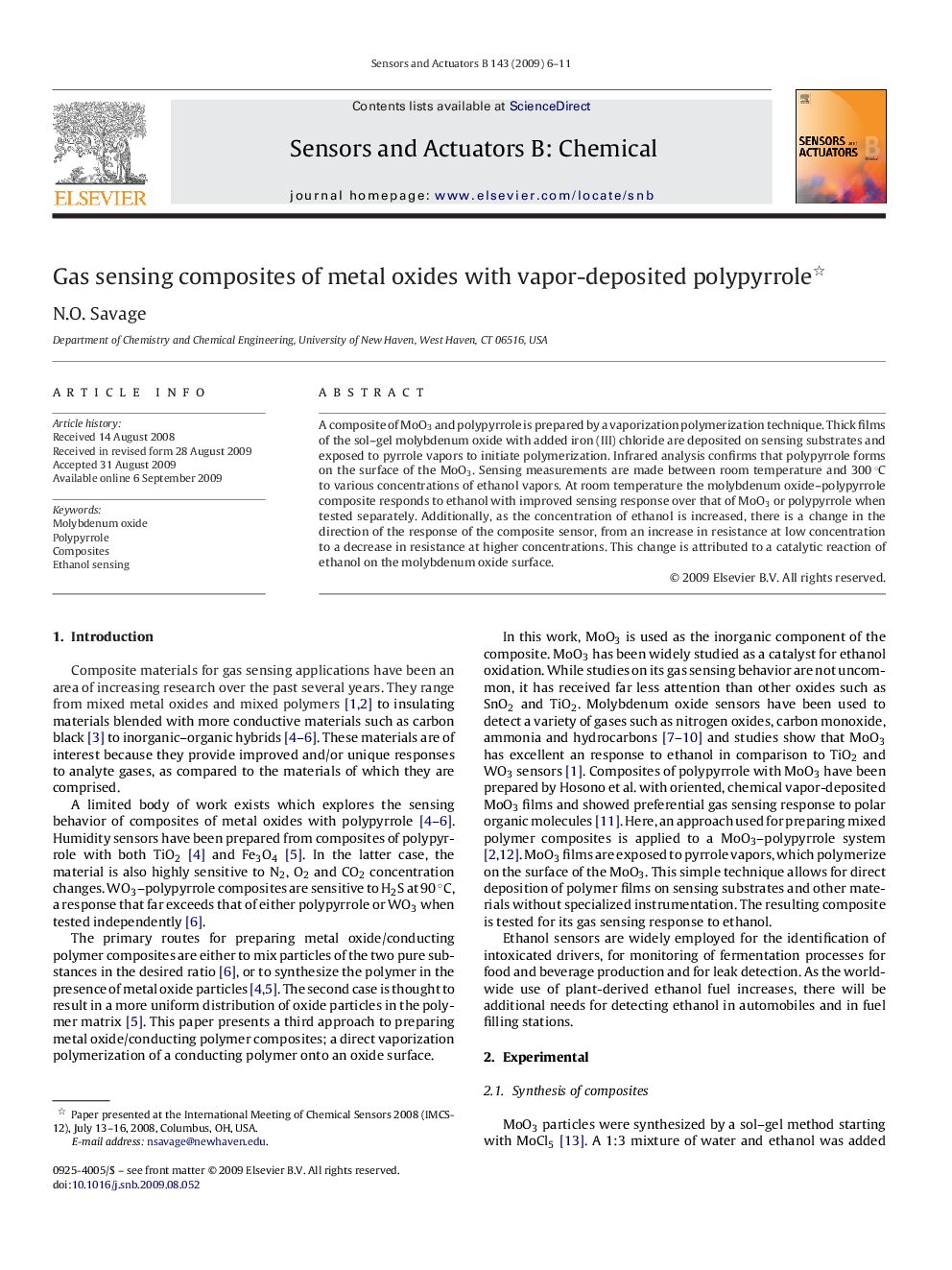| Article ID | Journal | Published Year | Pages | File Type |
|---|---|---|---|---|
| 746312 | Sensors and Actuators B: Chemical | 2009 | 6 Pages |
A composite of MoO3 and polypyrrole is prepared by a vaporization polymerization technique. Thick films of the sol–gel molybdenum oxide with added iron (III) chloride are deposited on sensing substrates and exposed to pyrrole vapors to initiate polymerization. Infrared analysis confirms that polypyrrole forms on the surface of the MoO3. Sensing measurements are made between room temperature and 300 °C to various concentrations of ethanol vapors. At room temperature the molybdenum oxide–polypyrrole composite responds to ethanol with improved sensing response over that of MoO3 or polypyrrole when tested separately. Additionally, as the concentration of ethanol is increased, there is a change in the direction of the response of the composite sensor, from an increase in resistance at low concentration to a decrease in resistance at higher concentrations. This change is attributed to a catalytic reaction of ethanol on the molybdenum oxide surface.
